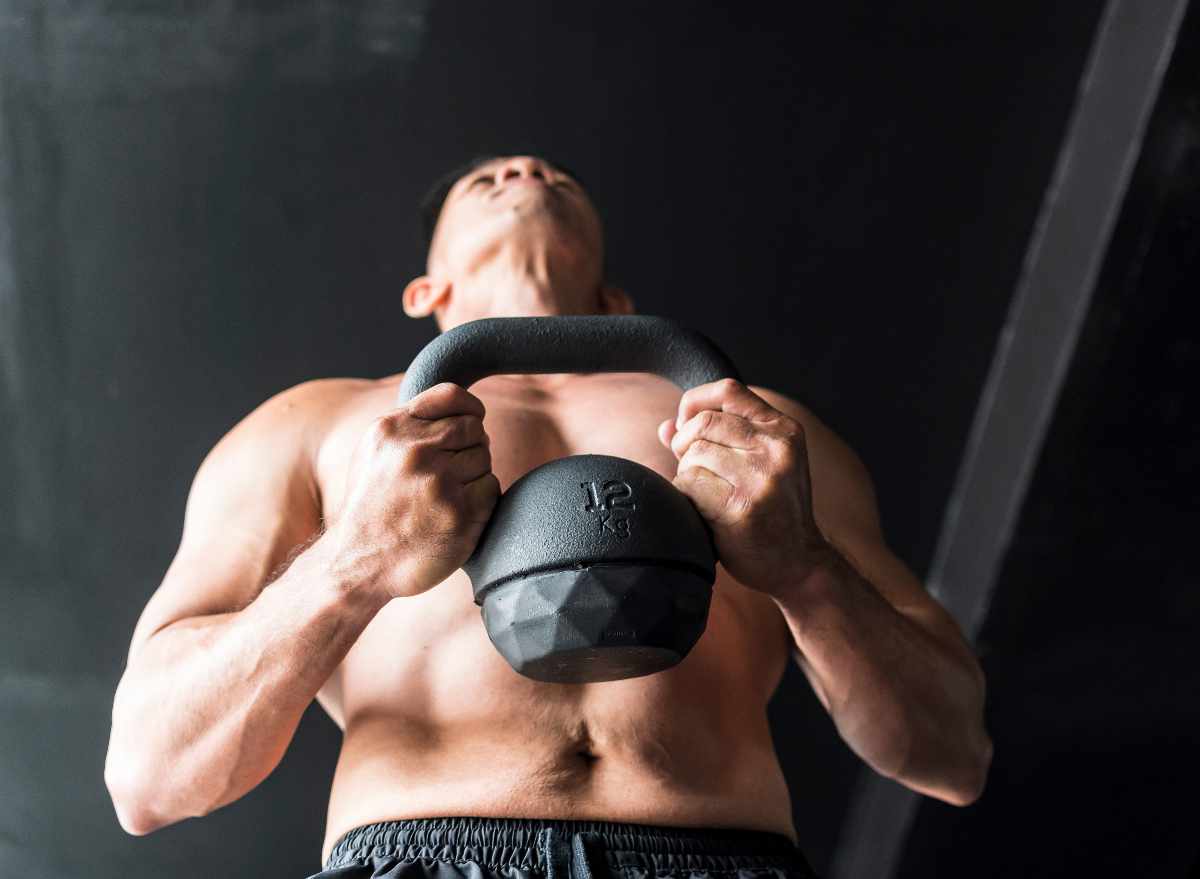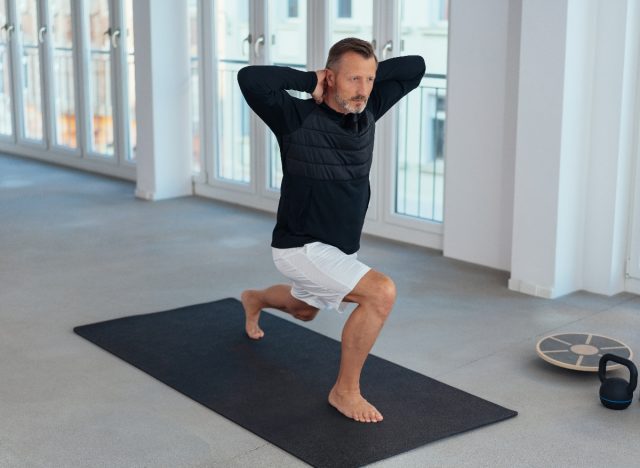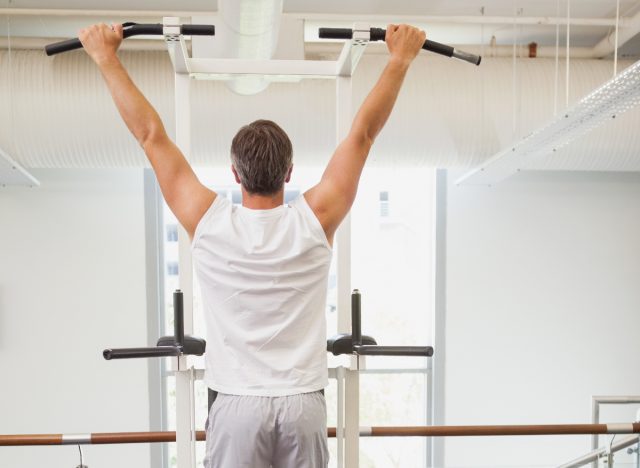The Best Strength Training Workout for Stronger Muscles After 40

Sculpting strong, toned muscles is an incredibly popular fitness goal—and for good reason. You may have heard this, but as you grow older, research finds that your supply of lean muscle mass decreases. The strength and function of your muscles also decline, making it more challenging to maintain your independence and so much easier to suffer from falls and injuries. That's why keeping up a solid strength routine is the name of the game, and we're here to share the necessary steps to curating the best workout for stronger muscles after 40.
We chatted with Matt Morris, master trainer and programming manager, NASM-CPT at Burn Boot Camp, who breaks down everything you need to know about curating an effective strength routine for strong muscles after 40.
He tells us, "The best strength training workout is the one you can adhere to over the span of your entire life. But to cover all aspects of strength training you should be choosing exercises that cover five of the basic human movement patterns."
Those five movement patterns are squat, hinge, lunge, push, and pull.
"All of these movement patterns need to be performed through the full range of motion, with control, and with a weight that provides adequate intensity for the individual," Morris adds.
Keep reading to learn all about this master trainer's best strength training workout for stronger muscles after 40, and next, don't miss 5 Strength Exercises That Drastically Change Your Body Shape After 50.
Squat: Goblet Squats

According to the National Academy of Sports Medicine (NASM), squats are a crucial part of any type of workout, and there are so many variations. To perform goblet squats, you'll set up with your feet positioned hip-width distance apart. Hold a kettlebell at your heart's center. Hinge your hips back, and descend into a squat. Push through your feet to come back up to standing.
Hinge: Deadlifts
You can perform deadlifts with a barbell, a kettlebell, or a set of dumbbells (which would be a Romanian deadlift). According to the NASM, to perform a kettlebell deadlift, you'll place your feet hip-width distance apart. Hinge your hips back, and bend at the knees to take hold of the kettlebell that's on the floor in front of you. Activate your core. Push through your feet to lift up the weight and stand back up. Then, reverse the motion.
Lunge: Reverse, Forward, or Lateral Lunges

The NASM dubs the lunge "an effective lower-body training exercise" that has so much versatility. In order to complete a basic upright lunge, you'll keep your torso straight and form what's typically referred to as a "90/90 lunge." This means each knee at the very bottom of the motion form 90-degree angles. Most of the weight in your upper body will be lined up with your hips.
Push: Chest Press
The dumbbell chest press will work your chest, arms, and shoulders, according to ACE Fitness. To set up, have a dumbbell in each hand using a pronated grip, and lie back onto a flat workout bench. Press each shoulder back and down into the bench. Then, press the weights up toward the ceiling, fully extending your arms. As you lower the dumbbells back down, keep things slow, steady, and controlled. Make sure your elbows don't stray from the sides of your body.
Pull: Pull-ups

Last but not least, it's time for some pull-ups, which will work your back and arms, according to ACE Fitness. Of course, you'll need to have a pull-up/chin-up bar handy for this exercise. Begin by standing below the bar, and bring your hands directly above your head, making sure your palms are facing away from your body. Jump up to grab the bar. Keep your head aligned with your core. Then, bend both elbows and pull them toward the sides of your body to gradually pull yourself up. Head upward until your chin is at the same height as the bar. Hold this position for a moment, then descend to the position you started in.









